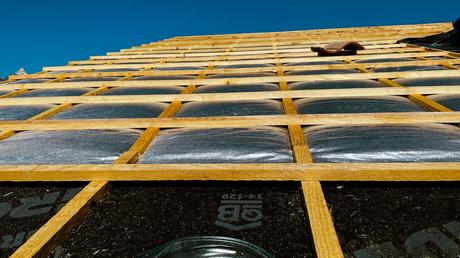The roof is one of the most important parts of any building, providing protection against the elements and ensuring the structural integrity of the building. However, many people need to be aware of the different components of a roof. Understanding your roof's anatomy is essential for maintaining its longevity and keeping it in good condition. In this article, we will discuss the different components of a roof and their functions.

Photo credit: Unsplash
The roof deck is a crucial component of any roofing system. It is the foundation upon which the roofing materials are installed and provides a flat, level surface for the roof to rest on. The most common materials used for the roof deck are plywood and OSB, both of which are strong, durable, and relatively inexpensive. Its thickness depends on the size of the roof and the spacing of its trusses. Thicker rooves can support heavier materials and prevent sagging or buckling.
Proper installation is crucial to the integrity of the entire roofing system. For example, the roof deck requires the correct spacing and fasteners to prevent movement, and its edges need proper sealing to prevent water seepage.
The underlayment is a waterproof layer installed on top of the deck before the roofing materials get installed. Its primary function is to provide an additional protective layer against water infiltration and prevent leaks. The most common types of underlayment are asphalt-saturated felt and synthetic materials, such as polyethylene and polypropylene.
When selecting an underlayment, it's important to consider factors such as durability, cost, and resistance to weather damage. For example, synthetic underlayment is more expensive than asphalt-saturated felt and is also more durable and resistant to tearing and UV radiation.
The choice of roofing material is one of the most important decisions a homeowner or building owner will make when installing or replacing a roof.
The most common types include:
- Asphalt shingles
- Metal roofing
- Clay and concrete tiles
- Wood shingles and shakes
- Rubber (EPDM) roofing
When choosing a roofing material, it is important to consider factors such as durability, cost, aesthetics, and resistance to weather damage. For example, asphalt shingles are popular because of their affordability and ease of installation, while metal roofing is preferred for its durability and longevity. Speak with a knowledgeable metal roofing company about these differences to learn more.
Flashing is a thin, waterproof material installed around a roof's parameters, including any penetration areas, such as chimneys, skylights, and vents. Its primary function is to prevent water from penetrating the roof in these vulnerable areas.
Several types of flashing are available, such as aluminum, copper, and steel. Each has its own unique benefits and drawbacks, as well as cost, durability, and compatibility with other roofing materials.
A ridge vent is a ventilation system installed at the peak of the roof. It allows hot air to escape from the attic, reducing the temperature and preventing moisture buildup. Proper ventilation is essential for maintaining a roof's longevity and will prevent moisture-related roofing problems, such as mold and rot.
When choosing a ridge vent, consider the type of roofing material, the pitch of the roof, and the climate in which your home resides. Consulting with a professional roofing contractor can help ensure that the right ridge vent is selected for your residence's specific needs.
Gutters and downspouts are essential components of a home's drainage system. They are installed along the edges of the roof and will channel rainwater away from your home and foundation.
Gutters can be made from a variety of materials, including aluminum, copper, and vinyl, and come in several styles and sizes. Downspouts are typically made from the same material as the gutters and help gutters further direct rainwater away from the building. They can be rectangular or round in shape and come in different designs.
It's important to ensure that downspouts get properly installed and sloped away from your home's foundation to prevent water pooling.

The fascia and soffit are vital components of a roof's structure. The fascia is the vertical band that runs along the edge and covers the rafters. It provides a surface for gutters and protects against moisture damage. The soffit is the underside of the overhang, typically wooden or vinyl. It provides ventilation to the attic and regulates its temperature and moisture levels.
The fascia and soffit also play an important role in the roof's aesthetic appeal. They can be customized to match the color and style of the roofing materials and the home's exterior. Proper maintenance of the fascia and soffit is essential for the longevity of the roof. Any signs of damage, such as rotting or cracking, should be addressed promptly to prevent water damage and other structural problems.
Knowing the different components of your roof is crucial for maintaining its longevity and protecting your home from the elements. The roof deck provides the foundation for the roof, while the underlayment, roofing materials, flashing, ridge vent, gutters, downspouts, and fascia and soffit all play roles in its general structure and function.
Consulting with a professional roofing contractor can help homeowners determine which roofing materials and components are best for their needs and budget. You can also conduct regular maintenance and inspections to identify and repair any issues before they become major problems to prolong the life of your roof further.
